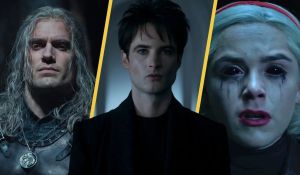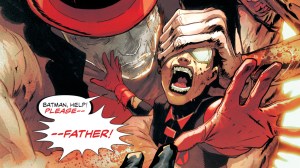AMC’s The Walking Dead was never shy about pulling the rug out from under us. From its earliest episodes, the series earned a reputation for high-stakes plotlines and ruthless surprises. In a world ruled by walkers, the most dangerous twists were almost always brought on by humans, and the original run of The Walking Dead used them to keep viewers on the edge of their seats for eleven seasons.
Videos by ComicBook.com
However, some of those twists went beyond shock value and shifted the show’s trajectory entirely, whether by forcing character transformations, pushing the narrative down unexpected paths, or completely resetting the rules of the game. We’ve compiled a list of ten twists that permanently changed The Walking Dead, for better or worse.
1) Sophia in the Barn

After spending most of Season 2 searching for Carol’s missing daughter, Sophia, played by Madison Lintz, the group stumbles on a terrible truth: Hershel (Scott Wilson) has been keeping walkers in his barn, still believing they’re sick rather than dead. When the group finally opens the doors, walker-Sophia stumbles out last. Melissa McBride’s Carol is overcome with grief, and Rick (Andrew Lincoln) is forced to put the young girl down.
This moment was the show’s first truly seismic shock because it rewrote the rules of hope. Until then, there was an idea that maybe not all tragedies would end in devastation, that someone, especially an innocent child, might be spared by the writers. But Sophia’s death crushed any false sense of cosmic justice in the brutal walker-ridden world.
2) Shane’s Death

As Jon Bernthal’s Shane becomes more volatile throughout Season 2, his relationship with Rick grows increasingly strained. It reaches a fever pitch when Shane lures Rick into the woods with the intent to kill him. But Rick anticipates the move and stabs Shane first. Rick’s son Carl (Chandler Riggs) arrives moments later and shoots Shane again after he reanimates, making Carl’s first kill one of heartbreaking necessity.
Shane’s death closes out the show’s first major internal conflict, but it also represents the moment Rick truly hardens. The group’s moral center begins to slip as survival instincts override moral compasses. The fact that Carl plays a key role in the aftermath is also critical; it accelerates his coming-of-age and reinforces the narrative that no one is safe from either death or corruption.
3) The Fall of the Prison
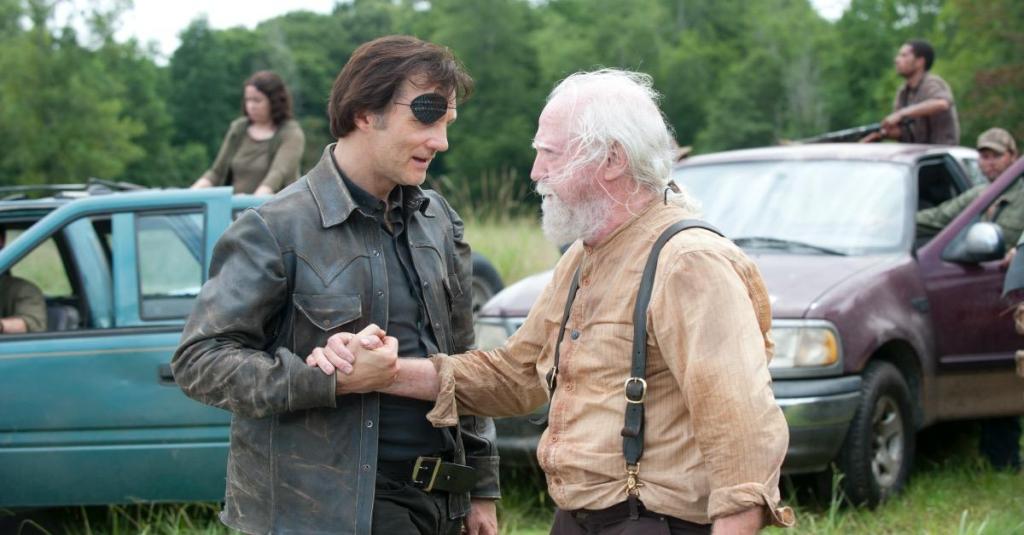
The group spends much of Seasons 3 and 4 building a community at the prison. However, when David Morrissey’s iconic villain, the Governor, returns with a tank and a vengeance, their fortress crumbles. In a single episode, Hershel is beheaded, the fences are breached, and the survivors are scattered in every direction. It’s an all-out assault that ends their most stable home yet.
The fall of the prison introduces the first in a string of ruthless big bads, and marks the end of the show’s ensemble as we knew it. The event splits the characters, launching each into solo or smaller group arcs. From this point forward, they are divided, trust is more complex to earn, and the idea of rebuilding a free society becomes even more distant.
4) Terminus Is a Trap
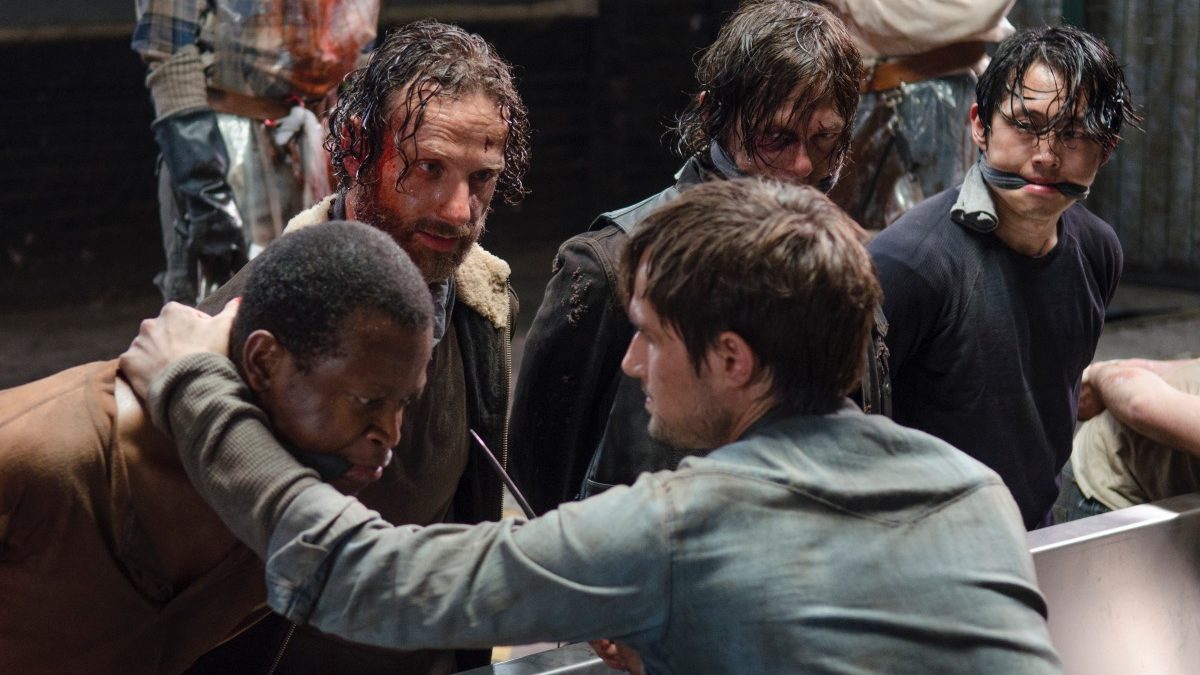
After the prison’s fall, the survivors are scattered and isolated across the countryside, slowly making their way toward a supposed sanctuary called Terminus. By the end of Season 4, several of them, including Rick, Carl, Michonne (Danai Gurira), Daryl (Norman Reedus), Glenn (Steven Yeun), and Maggie (Lauren Cohan), reunite there, only to be herded into a train car at gunpoint by Gareth (Andrew J. West) and his crew. In the Season 5 premiere, “No Sanctuary,” it becomes clear that the residents of Terminus are cannibals, and Rick’s group is being held captive to be butchered and eaten.
This twist escalated the series into full-blown horror-thriller territory as Terminus took things to a new level of depravity. “No Sanctuary” drew over 17 million viewers—the highest-rated episode in the show’s history. Rick’s transformation from conflicted leader to vengeful tactician was crystallized here, setting the tone for a darker, more visceral era of The Walking Dead.
5) Glenn’s Fake-Out Death
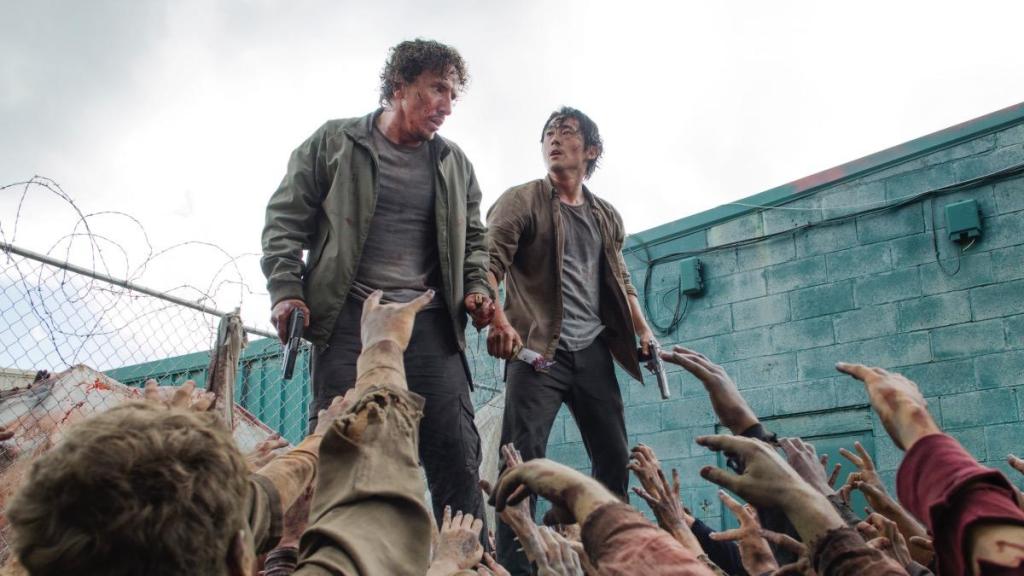
During a walker swarm in Season 6, fan-favorite character Glenn appears to be devoured after falling off a dumpster. Viewers mourned for weeks until a later episode revealed he survived by sliding under the bin and hiding beneath Nicholas’ corpse. The internet exploded with debate over whether the fake-out was cheap or brilliant, with many fans leaning towards frustration.
The twist shook trust in the show itself. It introduced a new kind of narrative manipulation over the audience, where death could be used for drama, but without the finality. It also made Glenn’s eventual death in Season 7 feel even more gutting, as fans had just been through the emotional wringer only to be dragged back into it.
6) Negan Kills Glenn and Abraham
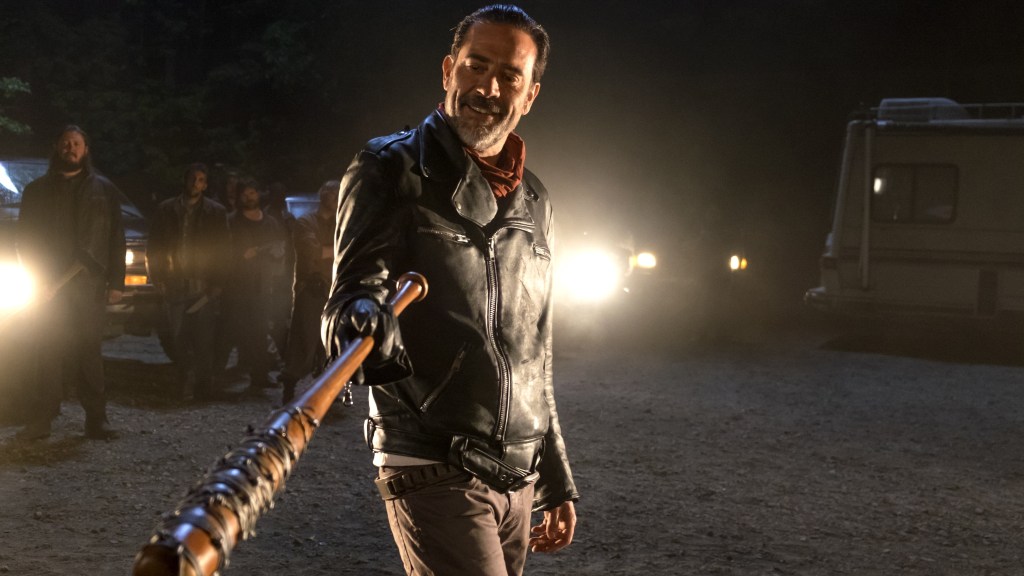
The Season 6 finale left fans on a cliffhanger: who did Negan, played by Jeffrey Dean Morgan, kill with his bat, Lucille? The Season 7 premiere delivered a double blow: first Abraham (Michael Cudlitz), then, in a shocking escalation, Glenn. The brutal, prolonged way their skulls were crushed divided audiences even further. After the fake death under the dumpster just a season earlier, some viewers felt the show’s best days were behind it.
While Negan quickly became one of the series’ most complex and popular villains, so much so that he would eventually headline his own spinoff, The Walking Dead: Dead City, it came at a steep cost. The sudden tonal shift into relentless nihilism, combined with the emotional whiplash of Glenn’s fake death and then actual death, led to a noticeable drop in ratings as many fans tapped out entirely. The Walking Dead never again reached the peak audience numbers it had before this episode.
7) Carl’s Bite
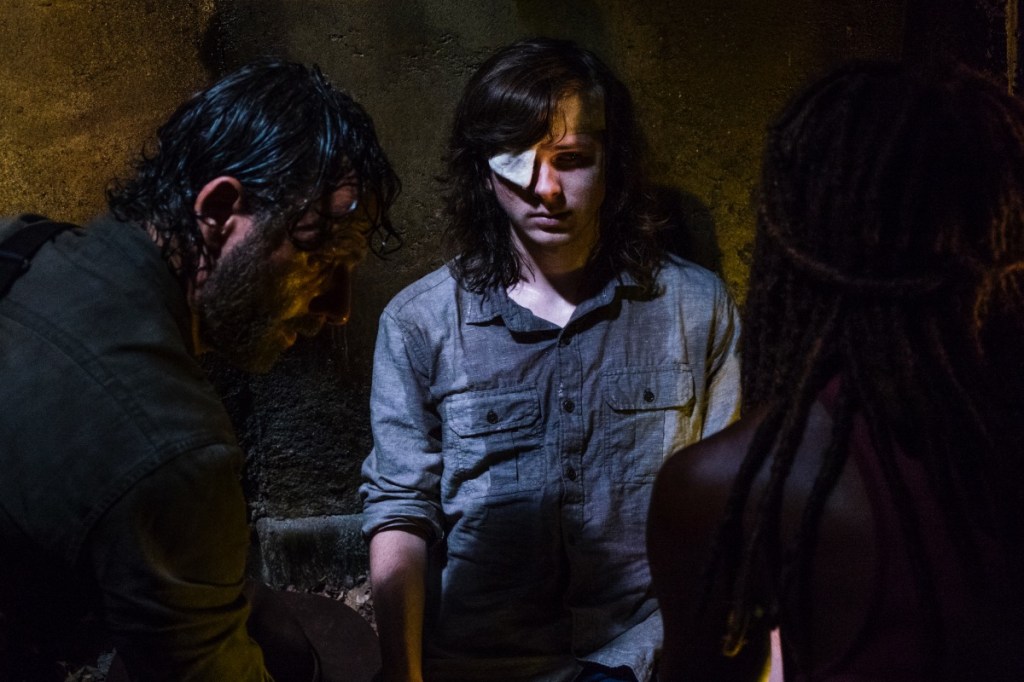
Midway through Season 8, Carl reveals a walker bite on his torso, an irreversible death sentence. Unlike previous major deaths, there’s no shocking attack or explosive moment. Instead, Carl spends his final episode writing letters to the people he loves, trying to leave behind a message of peace and hope. He dies a dignified death, choosing to end his own life before the infection can claim him.
Carl’s death stunned fans because it deviated so drastically from the comics, where Carl survives until the end. As Rick’s moral compass and the show’s symbolic “future,” Carl’s loss left a void that the show never fully refilled. The backlash was intense and many viewers and critics questioned the decision to kill off a character with so much unexplored potential. Without Carl, Rick’s motivations become more unstable, and the audience is forced to confront a bleaker, more uncertain future.
8) Rick Blows Up the Bridge
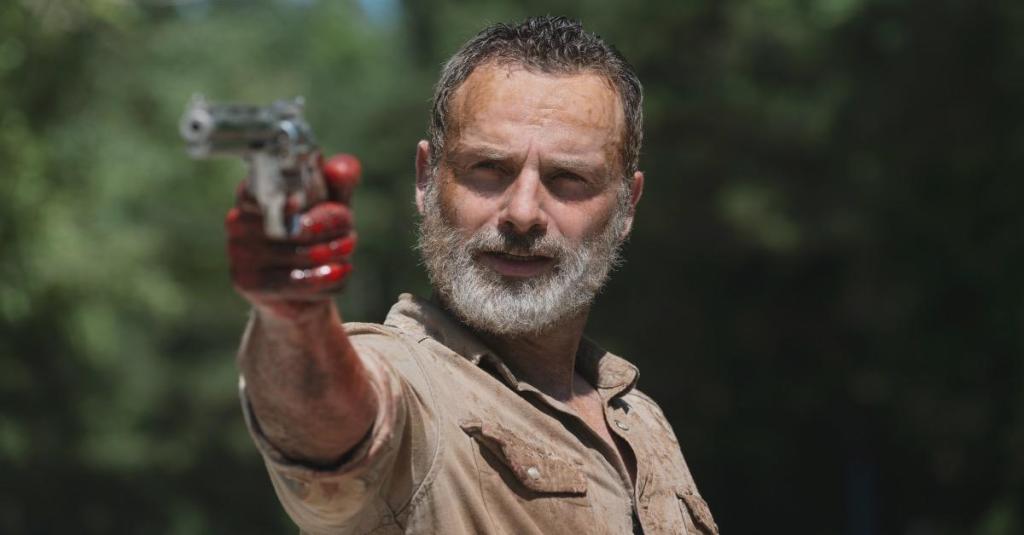
After suffering an injury while luring walkers away from his friends, Rick finds himself cornered on a bridge swarmed by the dead. In an act of sacrifice, he blows up the bridge to stop the horde, seemingly killing himself in the process. But in the episode’s final moments, it’s revealed that he survived and is airlifted away by Jadis (Pollyanna McIntosh) in a CRM helicopter, setting up his departure from the main series.
For nine seasons, Rick had been the narrative anchor of the show. Viewers were left to process a Walking Dead without their fearless leader, and ratings took another nosedive following his departure. At the same time, it opened the door for spinoffs and a broader universe, including The Walking Dead: The Ones Who Live, which follows Rick and Michonne’s journey post-CRM. His final bridge scene also symbolized the end of the show’s old world, paving the way for something entirely new.
9) The Six-Year Time Jump

Immediately following Rick’s disappearance, the show leaps forward six years. Judith (Cailey Fleming) is now a brave, gun-toting, katana-wielding child. Michonne has become emotionally closed off. Carol is living with Ezekiel (Khary Payton). Daryl has retreated into the woods. The structure of Alexandria and the surrounding communities has changed dramatically, with new conflicts brewing beneath the surface.
It’s clear this jump was a hard reset for the writers, and for a show that had just lost its lead, The Walking Dead used the time jump to reinvent itself with a fresh tone and new emotional stakes. It let characters evolve offscreen, introduced new survivors like Magna (Nadia Hilker) and Connie (Lauren Ridloff), and altered the group dynamics in ways that couldn’t have happened otherwise. It also gave Judith the narrative spotlight Carl once held, reviving some of the hope that had been lost. Generally, fans praised it as a necessary shake-up, and the jump reignited some interest in a show that was feeling stagnant.
10) The Commonwealth’s Secrets

In the final season, the survivors encounter the Commonwealth, a highly organized and well-resourced civilization led by Governor Pamela Milton (Laila Robins). At first, it seems like a return to the comforts of the pre-walker world: jobs, structure, and even sporting events. But as the season progresses, it becomes clear that the Commonwealth is corrupt. Inequality is rampant, voices are is silenced, and the elites tightly control power. The system begins to unravel as the group pushes back against its authoritarian structure.
The ugly truth behind the Commonwealth isn’t exactly a shocking moment, but it’s a slow-burn realization that civilization itself may be the greatest illusion of all. After a decade of fighting to rebuild society, our heroes discover that even the most advanced community is still plagued with the same old hierarchies and injustices. It’s a bitter but fitting conclusion to The Walking Dead’s central themes, and it sets the stage for future TWD spinoffs.
All eleven seasons of The Walking Dead are currently streaming on Netflix.
Which twist left you reeling? Share your favorite (or least favorite) twist in the comments.






